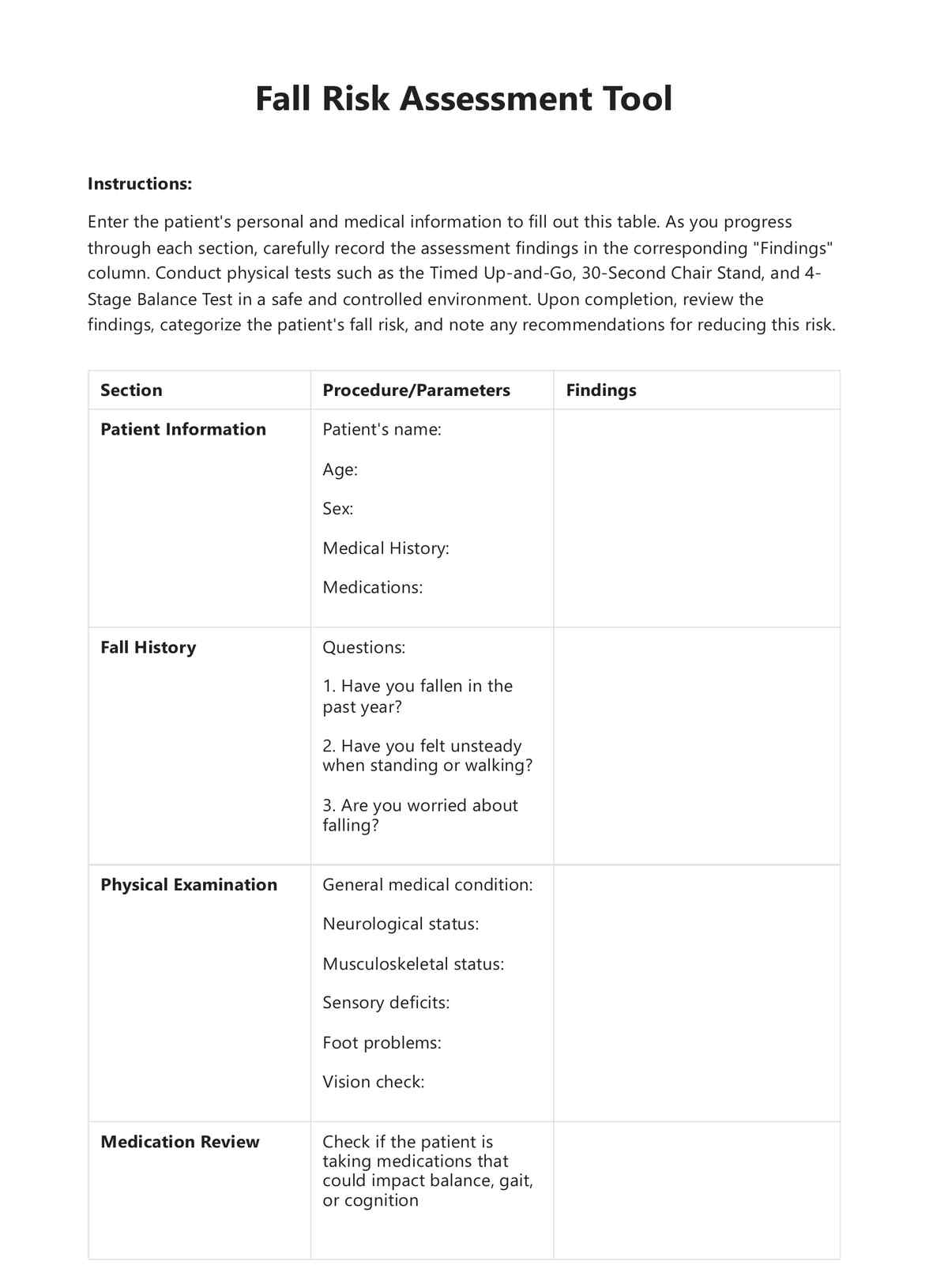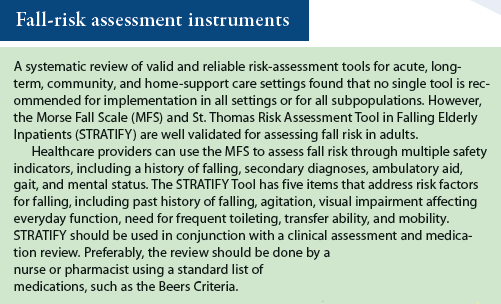An Unbiased View of Dementia Fall Risk
Table of ContentsWhat Does Dementia Fall Risk Mean?Some Known Incorrect Statements About Dementia Fall Risk The Ultimate Guide To Dementia Fall RiskThe smart Trick of Dementia Fall Risk That Nobody is Talking AboutThe Of Dementia Fall Risk
Evaluating autumn threat aids the whole healthcare team establish a much safer setting for each and every patient. Guarantee that there is an assigned location in your clinical charting system where team can document/reference ratings and document appropriate notes associated to drop prevention. The Johns Hopkins Autumn Danger Assessment Tool is one of numerous tools your personnel can utilize to assist stop damaging clinical occasions.Client falls in hospitals prevail and debilitating adverse occasions that continue in spite of decades of initiative to decrease them. Improving interaction across the assessing registered nurse, treatment team, person, and individual's most included family and friends may reinforce autumn prevention initiatives. A team at Brigham and Women's Hospital in Boston, Massachusetts, looked for to establish a standard autumn prevention program that focused around enhanced communication and client and family members involvement.

The advancement team emphasized that effective application depends on person and personnel buy-in, integration of the program right into existing process, and fidelity to program procedures. The team kept in mind that they are facing exactly how to guarantee connection in program application during durations of crisis. Throughout the COVID-19 pandemic, for example, a rise in inpatient falls was connected with restrictions in client interaction along with constraints on visitation.
The Greatest Guide To Dementia Fall Risk
These events are typically thought about preventable. To implement the intervention, companies require the following: Accessibility to Fall ideas sources Loss TIPS training and retraining for nursing and non-nursing personnel, consisting of brand-new nurses Nursing workflows that permit person and family engagement to carry out the falls evaluation, make certain usage of the prevention plan, and conduct patient-level audits.
The results can be extremely damaging, usually increasing patient decline and causing longer medical facility remains. One research study approximated stays raised an additional 12 in-patient days after a patient fall. The Fall TIPS Program is based on engaging patients and their family/loved ones across three major procedures: assessment, customized preventative treatments, and bookkeeping to make certain that people are involved in the three-step autumn avoidance process.
The client analysis is based upon the Morse Loss Range, which is a verified autumn risk assessment device for in-patient health center setups. The range includes the six most usual factors individuals in healthcare facilities fall: the client fall background, risky conditions (consisting of polypharmacy), usage of IVs and other external tools, psychological condition, gait, and flexibility.
Each danger element relate to several workable evidence-based interventions. The registered nurse produces a plan that includes the treatments and shows up to the treatment group, client, and family members on a laminated poster or published visual help. Nurses create the strategy while meeting the person and the individual's continue reading this family.
Dementia Fall Risk for Beginners
The poster functions as an interaction device with other members of the individual's treatment group. Dementia Fall Risk. The audit component of the program includes examining the person's knowledge of their risk aspects and avoidance strategy at the device and hospital levels. Nurse champions carry out at the very least 5 specific meetings a month with people and their families to look for understanding of the fall prevention plan

An approximated 30% of these drops outcome in injuries, which can range in seriousness. Unlike other unfavorable events that call for a standard scientific action, autumn prevention depends very on the demands of the individual.
Dementia Fall Risk for Dummies

Based upon auditing outcomes, one website had 86% compliance and 2 read this sites had more than 95% compliance. A cost-benefit analysis of the Loss suggestions program in 8 healthcare facilities estimated that the program price $0.88 per individual to execute and caused cost savings of $8,500 per 1000 patient-days in straight expenses connected to the avoidance of 567 falls over 3 years and eight months.
According to the technology team, companies interested in applying the program ought to perform a readiness analysis and falls prevention voids analysis. 8 In addition, organizations must ensure the necessary facilities and workflows for application and create an implementation strategy. If one exists, the company's Loss Prevention Task Pressure should be included in preparation.
The Best Strategy To Use For Dementia Fall Risk
To start, companies need to Web Site ensure completion of training modules by nurses and nursing assistants - Dementia Fall Risk. Healthcare facility personnel need to assess, based on the needs of a medical facility, whether to utilize an electronic health and wellness record printout or paper version of the fall prevention plan. Implementing teams should hire and educate registered nurse champs and establish processes for auditing and coverage on loss information
Personnel need to be associated with the process of redesigning the workflow to involve people and family members in the evaluation and prevention plan procedure. Equipment must be in place to ensure that systems can understand why a fall took place and remediate the reason. Much more specifically, registered nurses need to have networks to offer ongoing responses to both personnel and unit management so they can change and improve loss avoidance workflows and connect systemic issues.